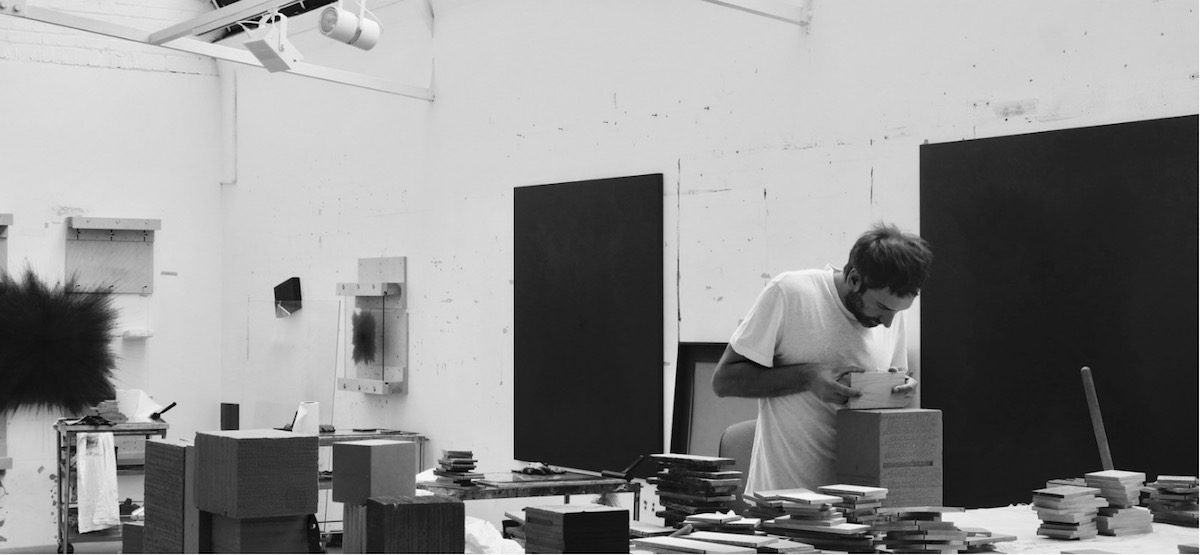Comprising a monumental sculpture, a multi-part installation, paintings of geometric and stripe formations, and works on paper, Absorbing Light is the most comprehensive exhibition by Idris Khan in London in four years.
The exhibition marks an important departure for Khan, who will show works in bronze for the first time along with an entirely abstract painting. Uniting aesthetic and metaphysical questions, Khan has often employed techniques of layering and repetition to realise fragmentary experience or disparate ideas as a single image or solid form. In these new works, two- and three-dimensional forms are triggered by a desire to ascertain how scale, mass and volume are perceived, measured or remembered in times of sensory deprivation or through compromised and fragmentary accounts.
A four-metre-square sculpture composed of fifteen columns, each painted a light-absorbing black to achieve a fathomless darkness, on initial impression reads as a solid, impenetrable mass rising up towards the ceiling. Upon closer inspection, as viewers’ eyes adjust, its interior structure is revealed as natural light travels through small spaces between each column. Always sensitive to the notion of scale, in particular the scale of a human body in relation to space, in this work Khan marries aesthetic beauty with a sense of disorientation and physical exclusion – heightening the anxiety a spectator might feel when unable to ascertain their surroundings.
A painting, three-and-a-half metres in length, is composed solely of alternating bars of light and dark black, subtly modulated to suggest surface and depth. Created to disrupt perception, the work accentuates the ways in which eye and mind can be tricked by a simple image into to seeing lights, lines, after images and shadows. The stripes, like bars, bring to mind thoughts of incarceration, while the interference patterns and strobing sensations, redolent of op-art, are suggestive of altered emotional or psychological states. In this work, Khan refers to the artistic lineage of the monochrome. Rather than reject representation, however, he embraces its complications and possibilities.

